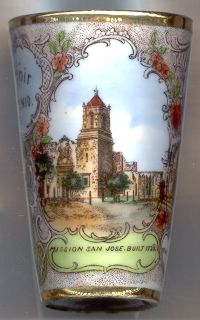

|
| UNITED STATES OF AMERICA | |
| TEXAS | |
| Bexar County |

| San Antonio is situated at an elevation of 196 m on the San Antonio River. San Antonio is the county seat of Bexar County and has a population of about 1.2 million (2004). It is thus the second-largest city in Texas and eighth in the United States. The San Antonio metropolitan area has a population of about 1.8 million (2003), the third-largest in Texas. A Spanish expedition reached the area in 1691. The place, which later was the site of the San Juan Capistrano Mission, was named San Antonio de Padua to commemorate the memorial day of St. Anthony, 13 June. In May 1718, Martín de Alarcón led the expedition that founded San Antonio de Valero Mission (later known as The Alamo) and San Antonio de Béxar Presidio, named for Viceroy Balthasar Manuel de Zúñiga y Guzmán Sotomayor y Sarmiento, Marquess of Valero and second son of the Duke of Béxar (Béjar). In 1731, three additional missions, Nuestra Señora de la Purisima Concepción de Acuña, San Francisco de la Espada, and San Juan Capistrano, were founded along the San Antonio River. The Battle of the Alamo took place in 1836, and eventually the town would grow to encompass the embattled mission.
|
|


The building was occupied by Mexican forces almost continuously until December 1835, when it was surrendered to Texan forces by General Martín Perfecto de Cos. Two months later, on 23 February 1836, Colonel William B. Travis entered the Alamo with a force that later totaled approximately 187 men. Approximately 5,000 Mexican soldiers under the command of General Antonio López de Santa Anna laid siege to the fortress for 13 days. The siege climaxed on 6 March and resulted in the death of most Texan defenders. After the siege, the building was nearly in ruins. Little attempt was made to restore it, and on 13 January 1841, the Republic of Texas passed an act returning the church of the Alamo to the Roman Catholic Church. After the annexation of Texas, the United States claimed the ruined building, which was used for quartermaster purposes by the Army until the Civil War. During the Civil War the Confederacy used the building, but after the war, the United States government reclaimed the building and used it until 1876. The ownership of the building was in dispute for much of the later half of the 19th century. On 23 April 1883, the State of Texas officially purchased the church building from the Catholic Church and gave to the city of San Antonio with the provision that the city should pay for the care of the building. The building has been restored on several occasions, most notably for the Texas Centennial in 1936.
|
|

[Texts modified from http://en.wikipedia.org/wiki/San_Antonio,_Texas, http://texas.i-found-it.net/, http://www.nps.gov/saan/visit/MissionSanJose.htm, http://en.wikipedia.org/wiki/Alamo_Mission_in_San_Antonio, http://www.nps.gov/saan/visit/MissionConcepcion.htm] | |||||||||
![[scale]](lineal.jpg)